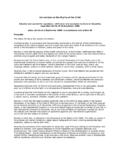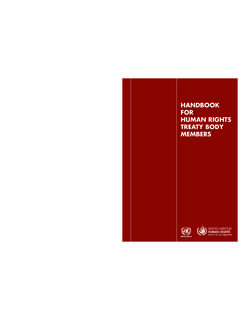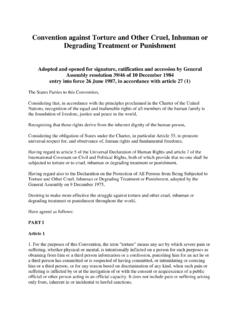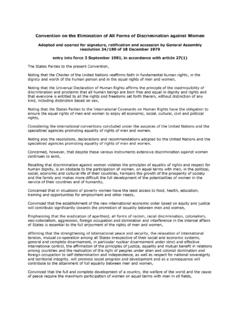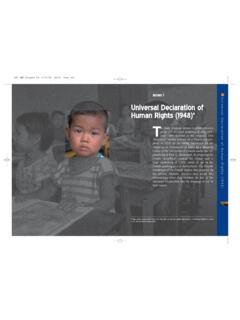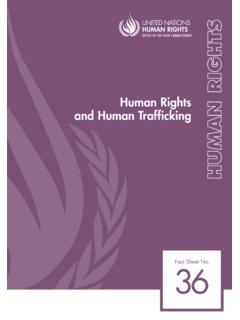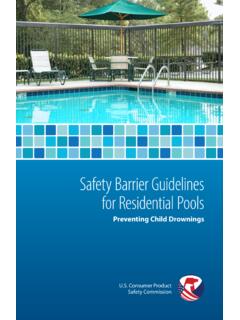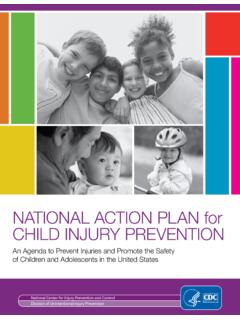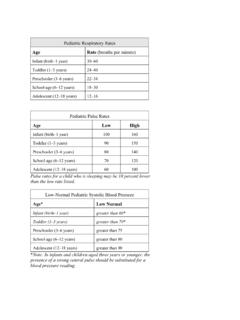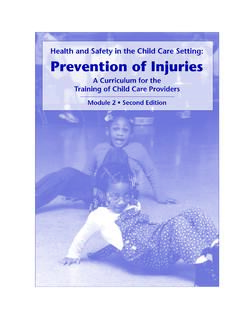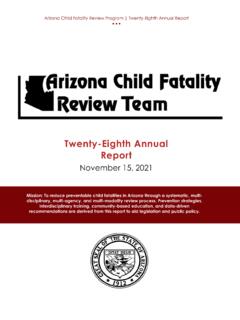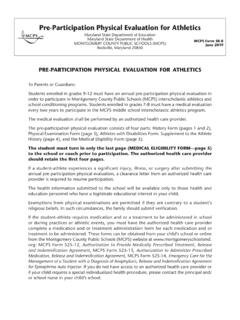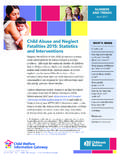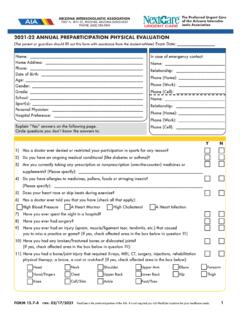Transcription of UNITED NATIONS
1 UNITED NATIONSVOLUNTARY TRUST FUND ON CONTEMPORARY FORMS OF SLAVERY UNITED NATIONS Centro de Defesa da Vida e dos Direitos Humanos Acailandia Bonded labourers burning hard wood to produce charcoal in Latin America. The Fund and the Plight of Victims of Modern SlaveryNavi Pillay / UN High Commissioner for Human RightsFor many, slavery is synonymous with the past, transatlantic slave trade. But sadly, slavery still exists in various forms. Today more than 27 million men, women and children still live in enslavement, or in slave-like conditions. They are trapped in forced labour and debt bondage, in domestic servitude and forced marriages, or exploited by human traffickers.
2 The first challenge in combating slavery must be recognition: we must acknowledge the bitter truth that slavery may have been weakened, but it continues to exist. The majority of those who suffer are poor and socially excluded groups, often living in the margins of our society. States have the responsibility to prevent, prohibit and punish all acts of slavery. They must reinforce access to justice and provide adequate protection mechanisms for the victims. The UNITED NATIONS Voluntary Trust Fund on Contemporary Forms of Slavery was established in 1991 by the UNITED NATIONS General Assembly to alert the world to the plight of these victims and give them direct assistance.
3 It is an effective and concrete mechanism, managed by my Office, which awards grants to civil society entities that provide assistance to victims of modern slavery. With the support of the Fund, victims can obtain redress, regain their freedom and rebuild lives of its creation, the Fund has provided support to tens of thousands of victims through more than 500 projects. They include victims of human trafficking for sexual exploitation and domestic servitude, children who have been exploited in mines and plantations and young girls who are victims of forced marriage. The Fund has supported the creation of emergency shelters, the delivery of humanitarian support and vocational training, as well as the provision of legal, medical and psychological aid to individuals whose human rights have been violated.
4 I urge Government, private and public entities to contribute to the Fund and its specialized and life-saving assistance to the victims of modern you for your support. / 3 Visayan Forum FoundationThe UN Voluntary Trust Fund on Contemporary Forms of SlaverySince its establishment in 1991, the UN Voluntary Fund on Contemporary Forms of Slavery, managed by the Office of the High Commissioner for Human Rights (OHCHR), has awarded several million US dollars in project grants to more than 500 organizations worldwide. These organisations extend humanitarian, legal, psychological and social assistance to individuals who have been subjected to modern slavery.
5 In addition to traditional slavery, modern forms of slavery include serfdom, forced labour, debt bondage, the worst forms of child labour, the sale of children, forced and early marriage, the sale of wives and inherited widows, trafficking in persons for exploitation and sexual slavery. The Fund supports projects aimed at: >REDRESS and REHABILITATION for victims of modern slavery through the provision of psychological, medical, legal and social assistance. >EMPOWERING victims through capacity building activities and vocational training so that they may re-gain self-sufficiency and their livelihoods. >INTEGRATING victims back into society by restoring their dignity and independence, working in partnership with their communities and the following pages, individuals who have escaped modern slavery and have rebuilt their lives with the assistance of the Fund, tell the stories of what they have endured.
6 < Countless women and children are lured by false promises made by criminal traffickers. / 5 Modern SlaveryToday numerous contemporary manifestations of slavery affect millions of people across the world. The UN Slavery Fund works to assist the victims of these atrocious practices, which include among others: > Traditional slavery individuals are born into slavery and are ascribed a slave status which lasts for life. They are, in effect, the property of the families who control them. >Debt bondage a person is held as collateral against a loan. The work of the bonded labourer is the means of repaying the loan. Since such labourers receive little or no pay, loan repayment is difficult, and his or her debt may even be inherited by the next generation.
7 >Serfdom a form of servile labour that binds a person by law, custom or agreement to work on land that belongs to someone else. The labourer s inability to change status makes this a form of slavery. >Forced labour work that is exacted under coercion, force, penalty, threats, intimidation and the denial of freedom. >Sale of children and worst forms of child labour include situations of child labour which are characterised by slavery, sexual exploitation, U. Roberto RomanoA 10 year old girl child laborer at a gravel quarry. / 6 Bonded labourers burning hard wood to produce charcoal in Latin America. illicit activities and hazardous work that is likely to harm the health, safety or morale of children.
8 Examples include forced begging, domestic servitude, work in quarries, brick kilns and dangerous work in the fishing industry for long hours and no pay. >Commercial sexual exploitation of children such as child prostitution, child sex tourism and child pornography. >Trafficking in persons for sexual exploitation and forced labour human beings are recruited, using threats, deception or coercion, for the purposes of economic or sexual exploitation. Traffickers confiscate victims passports, withhold wages, and force victims to work against their will. In other cases individuals are trafficked and exploited for the purpose of removing their organs.
9 >Sexual slavery the sexual exploitation of individuals through the use or threat of force, often occurring in times of armed conflict or belligerent occupation. There may be no financial gain in sexual slavery, unlike in the case of exploitation of prostitution (another contemporary form of slavery). >Forced or early marriage, the sale of wives and widow inheritance slavery-like practices which exist within the context of marriage. Forced marriage takes place without the free or valid consent of either or both parties and on payment of money or in kind to third parties. In widow inheritance, a widow is automatically re-married to her husband s brother or another member of the family, following the death of her husband.
10 >Other forms of slavery these are brought to light constantly. Sadly, modern slavery is a global and dynamic phenomenon. The forcible recruitment of child soldiers, forced labour in export processing zones (sweatshops) and fisheries, domestic servitude, sex tourism and illegal activities within certain religions and cults are among the practices that resemble slavery. Centro de Defesa da Vida e dos Direitos Humanos Acailandia/ 7 Maria in an educational movie about human traffickingCredit: Cecilia Felmeri, ADPARET rafficking for Sexual Exploitation Maria s story Maria was just 16 when she moved in with her boyfriend, in the town where she grew up in Romania, and had a baby.
